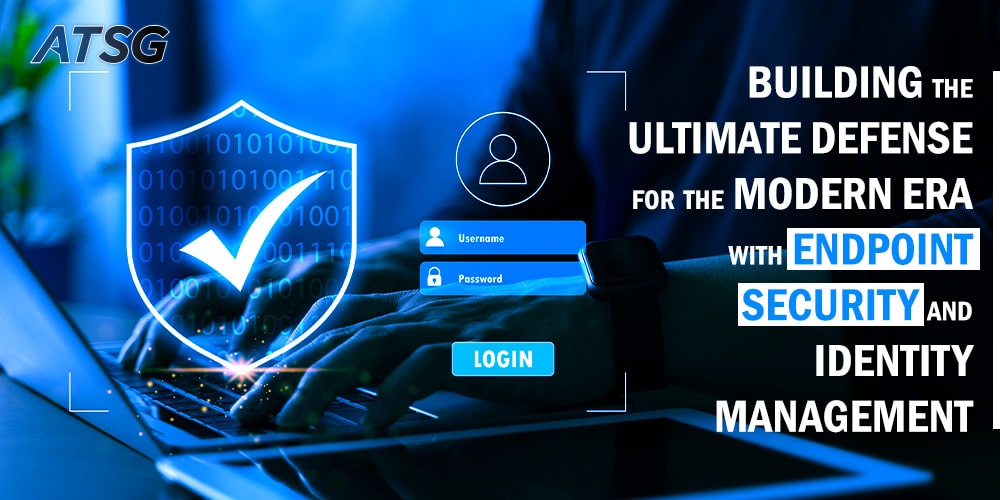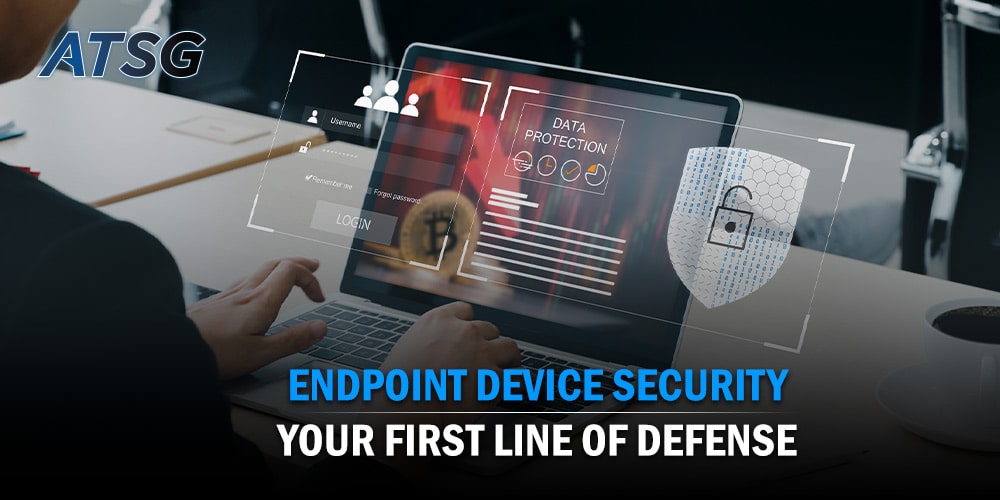In the beginning of 2024, the World Economic Forum highlighted Cybersecurity as a top concern for businesses worldwide. This concern escalates further, owing to the rise of hybrid and remote work models. That is because the limitations of traditional, perimeter-based security approaches have become quite evident, and are falling short of safeguarding sensitive data and critical systems.
As organizations adapt to this evolving landscape, prioritizing endpoint device security, along with Identity and Access Management (IAM), emerge as crucial steps in navigating present day cybersecurity challenges.

The Evolving Threat Landscape
Why Endpoint Security and Identity Management Matter?
The cybersecurity scene is seeing some big changes lately, owing mainly to evolving threats, technological advances and shifts in the market. One thing that is catching attention is how the nature of cyber threats is becoming increasingly sophisticated and multi-pronged.
We also keep hearing about the rise of ransomware attacks and supply chain vulnerabilities. It is a stark reminder of how un-predictable this market can be. Companies are rethinking their strategies, with a newfound emphasis on leveraging the services of Managed Service Providers (MSPs) like ATSG, to enhance both identity and endpoint security measures. It is less about having a ton of tools, and more about getting meaningful insights from data analysis.
Endpoint Device Security – Your First Line of Defense
When it comes to keeping critical IT systems and data safe, endpoint security really counts. Think of it as the “shield” that stands between your devices and the ever-looming threats of the digital world. This proactive approach to threat prevention enhances the overall security posture of the organization.

With Endpoint Detection and Response (EDR) solutions, businesses are able to keep a close eye on what is happening on their devices, in real-time. Whether it is a laptop, desktop or mobile device, EDR allows businesses to monitor activities, detect any suspicious behavior, and respond swiftly if there is a potential security threat or incident.
Having this level of visibility and control is essential, as it allows organizations to mitigate risks, before they escalate into full-blown breaches. And in the un-fortunate event of a cyberattack, EDR helps contain the damage, and minimize the adverse impact on the network and valuable data.
Moreover, endpoint security solutions leverage advanced technologies, such as Machine Learning (ML) and behavioral analytics, to identify and remediate potential vulnerabilities arising from employee endpoint devices.
Identity Security – Controlling Access and Preventing Breaches
Most high-profile breaches, specifically related to identity theft, have thrust identity security into the limelight. Identity security, also known as Identity and Access Management (IAM), involves the utilization of processes and technologies to verify the authenticity of individuals or entities, prior to granting them access to systems, networks, applications or data.
The core principle is to ensure that users only have access to the resources and data necessary to perform their job functions. IAM is really helpful, as it minimizes the risks associated with un-authorized access and insider threats, mitigating the chances of a data breach.
Plus, our digital identities have also grown in number and complexity, with numerous permutations across multiple accounts, transactions and credentials. Today, an identity can signify a specific person, machine, resource or system, expanding far beyond traditional human associations.
Integration is Key
Merging Endpoint Security and Identity Management
While endpoint security and IAM are often viewed as distinct components of cybersecurity, integrating these two capabilities can prove quite beneficial for the overall cybersecurity posture of an enterprise. For instance, when you integrate the data from endpoint devices with information about who is accessing which resources of the organization, you suddenly gain deeper insights about what exactly is going on.
Another benefit of this integration is that it enables more granular control over access rights and permissions. Businesses can enforce security policies based on contextual factors such as user roles, device health, time, and location.
Additionally, by correlating endpoint data with identity attributes, anomalous activities can be quickly identified and remediated. Ultimately, businesses can establish a more robust security posture, that addresses the evolving nature of today’s cyber threats.
Best Practices for a Robust Endpoint Protection and Identity Management Strategy
Implementing a robust endpoint protection and identity management strategy requires a multi-faceted approach that encompasses people, processes and technology.
Here are some best practices for optimal results:
- Businesses must map-out where identity security gaps exist, and work to solve them with regular vulnerability assessments and patch management.
- Educating employees and raising awareness is equally important when it comes to endpoint security and IAM. Businesses must foster open dialogue between identity and security teams to promote a security-first mindset.
- Businesses must also strive to implement a “least privilege” access approach in their identity infrastructure. They must not think twice before enforcing policies to restrict unnecessary access privileges.
- Organizations must also leverage automation and orchestration capabilities, to enhance incident response and remediation capabilities.
- Businesses must also tap into the expertise of trusted cybersecurity solution providers, to stay abreast of emerging threats and the latest security trends.
Conclusion
By now, it is quite evident that Endpoint Security and Identity and Access Management (IAM) are crucial components of today’s cybersecurity strategy. Businesses just need to figure out how to seamlessly integrate these capabilities, and continually evolve to stay ahead of cyber adversaries.
At ATSG, we understand the critical importance of robust endpoint device security and IAM capabilities, in safeguarding your organization against cyber threats. ATSG offers cutting edge Managed Detection & Response (MDR), and Identity and Access Management (IAM) capabilities, as part of our Managed Security solutions portfolio.
Our MDR solution ensures that your endpoints are protected against advanced cyber threats in real-time. Our MDR solution automates the monitoring, detection and response to cyber threats originating from employee endpoint devices.
Additionally, our Identity & Access Management (IAM) capabilities empower organizations to efficiently manage user identities, enforce robust policies, and strengthen user authentication mechanisms with 2FA or MFA, across the digital environment.
In the fateful event of a data or security breach, ATSG’s Breach Containment capabilities enable swift, effective, and well-structured response measures, to isolate and mitigate the adverse impact of the incident.
By leveraging the comprehensive Managed Security solutions of ATSG, spanning across cyber risk Advisory & Assessment, Managed Detection & Response (MDR), Breach Containment, and Identity & Access Management (IAM), your business can stay ahead of evolving cyber threats, and safeguard its digital future.
Contact ATSG for fully Managed Security, Managed Operations, Managed Network and Managed Cloud solutions for your organization.




